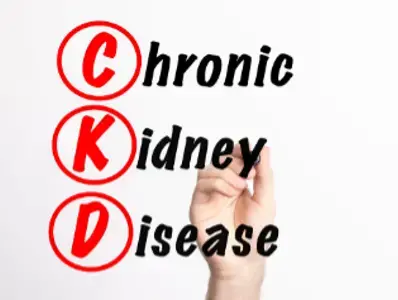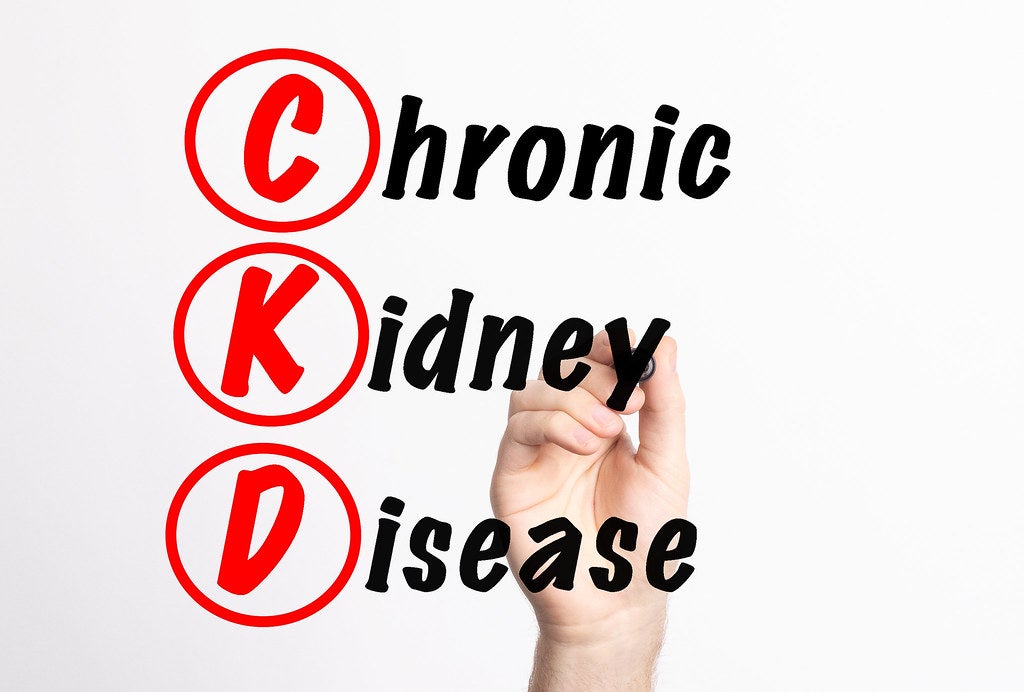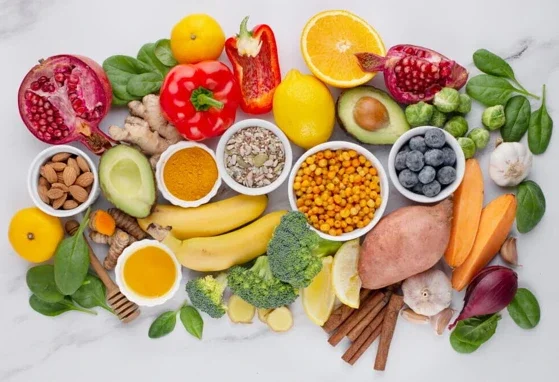Living Well With Kidney Disease


Death statistics from kidney disease worldwide are frightening and countries in Africa are no exception. On the continent, the death rate per 100 000 people per country varies from 5.07 to 36.93 (see table 1). World Kidney Day this month (10 March), is an opportune time for healthcare professionals (HCPs) to understand how they can better help patients suffering from chronic kidney disease (CKD).
CKD is a global problem affecting about 10% of the world’s population 1. In sub-Saharan Africa, approximately 14% of the adult population suffers from CKD1. It is important to note that diet can play a role in not only reducing the extent of kidney disease but also increasing any affected individuals’ longevity.
‘Living well with Kidney Disease’ is the theme of this year’s World Kidney Day. The 2022 goal is to highlight kidney health for everyone, everywhere. From an NNIA perspective, this includes – especially – reaching its members whose dietary recommendations to patients suffering from CKD will affect not only their longevity but also their quality of life.
The challenges with managing CKD in Africa are:
- Lifestyle changes resulting in obesity that increases the risk of kidney disease
- A link between HIV and kidney failure
- Treatment failures
Many patients with kidney failure either incur catastrophic out-of-pocket medical expenses, or they die. The above-listed challenges, therefore, must be addressed.
A critical intervention would be to prompt people to eat healthier. Sustained, moderate weight loss is beneficial not only for obese individuals, but also for those with diabetes, hypertension, hyperlipidemia, cardiorespiratory disease, and other chronic degenerative diseases associated with any degree of excess body fat.
Out of 183 countries with high levels of CKD worldwide, 47 African countries have death rates varying from 5 to 37 per 100 000 CKD-affected individuals (see Table 1).
The role of protein and specific diets in CKD
Proteins are complex, large-sized molecules present in living organisms. They offer great nutritional value and are involved in many chemical processes essential for life. A high protein diet of animal origin, originating from Western dietary practices, is consistently associated with a small to moderate increased risk of premature mortality and harmful effects for several chronic diseases, including CKD3.
This means that high consumption of proteins could be detrimental to kidney function through several mechanisms:4
- It may introduce vasodilation of afferent renal arterioles, glomerular hypertension, and hyperfiltration. Together, these accelerate the progression of pre-existing CKD.
- Increased consumption of red and processed meat is associated with increased blood pressure, metabolic acidosis, and mitochondrial oxidative stress.
- DNA damage (caused by N-nitroso compounds).
- Increased accumulation of protein catabolism end-products, such as p-cresyl sulfate, indoxyl sulfate, and trimethyl aminoxide.
It is important to note that nephrologists advise CKD patients to restrict their protein intake. The aim is to reduce the accumulation of these molecules, reducing the onset and the severity of uremic symptoms4. However, the optimal diet for CKD patients is still controversial and depends on the estimated glomerular filtration rate (eGFR), type of kidney disease, and the presence of other comorbidities.
There are various dietary strategies for managing CKD. Some of these are low protein diets (LPD), very low protein diets (VLPD), protein restriction and Keto-Analogs (KAs) diets, as well as plant-based diets.
Impact of low-protein diets and dietary patterns on CKD-related outcomes
An LPD is a long-standing recommendation for managing CKD because of its potential protective effect on renal hemodynamics. Limiting protein intake from animal sources and moving to vegetable protein sources is associated with several positive effects. These include reduction of uremic toxins, the correction of metabolic acidosis, and reduced phosphorus load with better control of metabolic bone disorder.
Importantly, these diets should be progressively installed to allow careful dietary monitoring and adequate adherence. Attention should be focused on energy intake, which may decrease over time and induce weight loss and wasting.
The balance of evidence suggests that moderate dietary restriction (0.6-0.8g/kg/day) has positive effects in the management of CKD. But there has been debate about whether an LDP has any benefit for diabetic patients, as different studies yielded conflicting results5 & 6.
Protein restriction and Keto-Analogs
Keto-Analogs of amino acids (KAs) are nitrogen-free analogs of essential amino acids. Usually, when in combination with either LPD or VLPD, they allow a reduced intake of nitrogen, while avoiding the deleterious consequences of inadequate dietary protein intake and malnourishment7.
For the most part, dietary trials have focused on restricting total protein rather than on the type of protein intake – animal or vegetable. The protein type may be more important for kidney disease progression than the total amount of protein intake. Increasing red and processed meat intake is associated with a significant risk of glomerular filtration rate (GFR) decline, and a strong adherence to a diet characterised by a high intake of fruits, vegetables, and low-fat dairy products is associated with a lower risk of CKD8.
A very low protein diet of vegetable origin, supplemented with Keto-Analogs, when compared to a standard low protein diet, has proven to play a positive role in patients with a stable eGFR. Supplementing the two protein-type diets with KAs offers advantages beyond kidney outcomes, and is effective in lowering blood pressure too10.
The National Kidney Foundation’s Kidney Disease Outcomes Quality Initiative recommends an LPD providing 0.55-0.60 g dietary protein/kg body weight per day, or VLPD providing 0.28-0.43 dietary protein/kg body weight per day, with additional keto acid/amino acid analogs in CKD 3-5 who are metabolically stable to reduce the risk for end-stage kidney disease or death. In an adult with CKD 3-5 and who suffers from diabetes, the same guideline suggests a dietary protein intake of 0.6-0.8 g/kg body weight per day to maintain a stable nutritional status, and to optimise glycemic control. However, this statement has not been graded – it is an opinion of the workgroup only11.
Although vegetable protein diets may have beneficial effects on health, the type of protein intake (plant or animal) is not specified in the recommendations due to insufficient evidence in terms of the effects on nutritional status, calcium or phosphorus levels, or the blood lipid profile. Even if evidence and guidelines specify several benefits associated with VLPD supplemented with KAs, some patients may find it difficult to adapt their lifestyle to this diet, or to maintain it for the long-term.
The MDRD study showed that only 60% of the subjects adhered to the prescribed dietary protein intake – one of the reasons why some dieticians are reluctant to prescribe these diets.
Plant-based diets increasing in popularity
Plant-based diets are used with increasing popularity in CKD patients. They practically include all eating configurations with a great proportion of plant foods (fruits, vegetables, nuts, seeds, oils whole grain, legumes, and beans), and can include or exclude modest quantities of meat, fish, seafood, eggs, or dairy.
A vegan diet, the Mediterranean diet, DASH (the Dietary Approaches to Stop Hypertension) diet, or healthy eating diet are all in line with the concept of a plant-based diet. (The DASH diet is a holistic eating pattern including legumes, whole grain vegetables, fruits, low-fat dairy products, moderate quantities of poultry, fish, and nuts; and low quantities of sodium, red/processed meat, and alcoholic and sweetened beverages.)
In conclusion, healthcare professionals, with their knowledge of nutrition and health, are well-positioned to guide their patients towards the appropriate diets that will promote long-term kidney health.
Table 1 (acknowledgements to www.worldlifeexpectancy.com)
|
Country ranking in the world in terms of the number of deaths in each per 100 000 CKD-affected individuals: |
||
|
Country |
World Ranking |
Deaths per 100 000 people |
|
Kenya |
156 |
5.07 |
|
Madagascar |
152 |
6.77 |
|
Rwanda |
144 |
8.76 |
|
DR Congo |
141 |
9.06 |
|
Mozambique |
139 |
9.25 |
|
Malawi |
135 |
9.67 |
|
South Sudan |
133 |
9.90 |
|
Angola |
132 |
10.02 |
|
Tanzania |
131 |
10.26 |
|
Zambia |
126 |
10.72 |
|
Congo |
125 |
10.80 |
|
Central Africa |
119 |
11.37 |
|
Eritrea |
117 |
11.69 |
|
Gabon |
112 |
12.42 |
|
Uganda |
111 |
12.43 |
|
Ethiopia |
109 |
12.70 |
|
Comoros |
108 |
12.73 |
|
Somalia |
107 |
12.74 |
|
Nigeria |
99 |
13.66 |
|
Equatorial Guinea |
85 |
16.79 |
|
Burkina Faso |
82 |
17.23 |
|
Cape Verde |
79 |
19.19 |
|
Ghana |
77 |
19.33 |
|
Botswana |
73 |
20.07 |
|
Namibia |
71 |
20.16 |
|
Guinea |
70 |
20.44 |
|
Togo |
69 |
20.50 |
|
Niger |
65 |
21.52 |
|
Guinea Bissau |
64 |
21.54 |
|
Algeria |
60 |
22.93 |
|
Lesotho |
57 |
23.21 |
|
Senegal |
55 |
23.37 |
|
Liberia |
54 |
23.39 |
|
The Gambia |
50 |
23.99 |
|
Mauritania |
49 |
24.28 |
|
Zimbabwe |
48 |
25.36 |
|
Cameroon |
47 |
25.59 |
|
Mali |
46 |
25.69 |
|
Swaziland |
42 |
26.27 |
|
Chad |
38 |
28.53 |
|
Morocco |
35 |
29.48 |
|
South Africa |
33 |
29.74 |
|
Egypt |
31 |
29.87 |
|
Tunisia |
24 |
31.89 |
|
Sierra Leone |
20 |
33.23 |
|
Fiji |
17 |
36.38 |
|
Sudan |
16 |
36.93 |
_______________________________________________________________
References
- The Conversation – ex Irene Labuschagne, principle dietitian at the Nutrition Information Centre, Stellenbosch University and Johan Nel, senor specialist, Stellenbosch University, Nephrology Division.
- Nutrients (PCM Labs) March 2021
- Wolk A. Potential health hazards of eating red meat. J. Intern. Med. 2017; 281: 106-122
- kizler, T.A.; Burrowes, J.D.; Byham-Gray, L.D.; Campbell, K.L.; Carrero, J.-J.; Chan, W.; Fouque, D.; Friedman, A.N.; Ghaddar, S.; Goldstein-Fuchs, D.J.; et al. KDOQ
- Zhu H.G, et al, Efficacy of low protein diet for diabetic nephropathy: A systematic review of randomized controlled trials. Lipids Health Dis. 2018;17:141. Doi: 10. 1186/s12944-018-0791-8
- Li X.F., Xu J., Liu L.J., Wang F., He S.L., Su Y., Dong C.P. Efficacy of low-protein diet in diabetic nephropathy: A meta-analysis of randomized controlled trials. Lipids Health Dis. 2019;18:82. doi: 10.1186/s12944-019-1007-6
- Li A., Lee H.Y., Lin Y.C. The Effect of Ketoanalogues on Chronic Kidney Disease Deterioration: A Meta-Analysis. Nutrients. 2019;11:957. doi: 10.3390/nu11050957
- Haring B., Selvin E., Liang M., Coresh J., Grams M.E., Petruski-Ivleva N., Steffen L.M., Rebholz C.M. Dietary Protein Sources and Risk for Incident Chronic Kidney Disease: Results From the Atherosclerosis Risk in Communities (ARIC) Study. J. Ren. Nutr. 2017;27:233–242. doi: 10.1053/j.jrn.2016.11.004
- Garneata L., Stancu A., Dragomir D., Stefan G., Mircescu G. Ketoanalogue-Supplemented Vegetarian Very Low-Protein Diet and CKD Progression. J. Am. Soc. Nephrol. 2016;27:2164–2176. doi: 10.1681/ASN.2015040369
- Chewcharat A., Takkavatakarn K., Wongrattanagorn S., Panrong K., Kittiskulnam P., Eiam-Ong S., Susantitaphong P. The Effects of Restricted Protein Diet Supplemented With Ketoanalogue on Renal Function, Blood Pressure, Nutritional Status, and Chronic Kidney Disease-Mineral and Bone Disorder in Chronic Kidney Disease Patients: A Systematic Review and Meta-Analysis. J. Ren. Nutr. 2020;30:189–199. doi: 10.1053/j.jrn.2019.07.005
- 2. Ikizler T.A., Burrowes J.D., Byham-Gray L.D., Campbell K.L., Carrero J.J., Chan W., Fouque D., Friedman A.N., Ghaddar S., Goldstein-Fuchs D.J., et al. KDOQI Clinical Practice Guideline for Nutrition in CKD: 2020 Update. Am. J. Kidney Dis. 2020;76:S1–S107. doi: 10.1053/j.ajkd.2020.05.006.
If you liked this post you may also like




A recap on NNIA’s Functional Gastrointestinal Disorders
